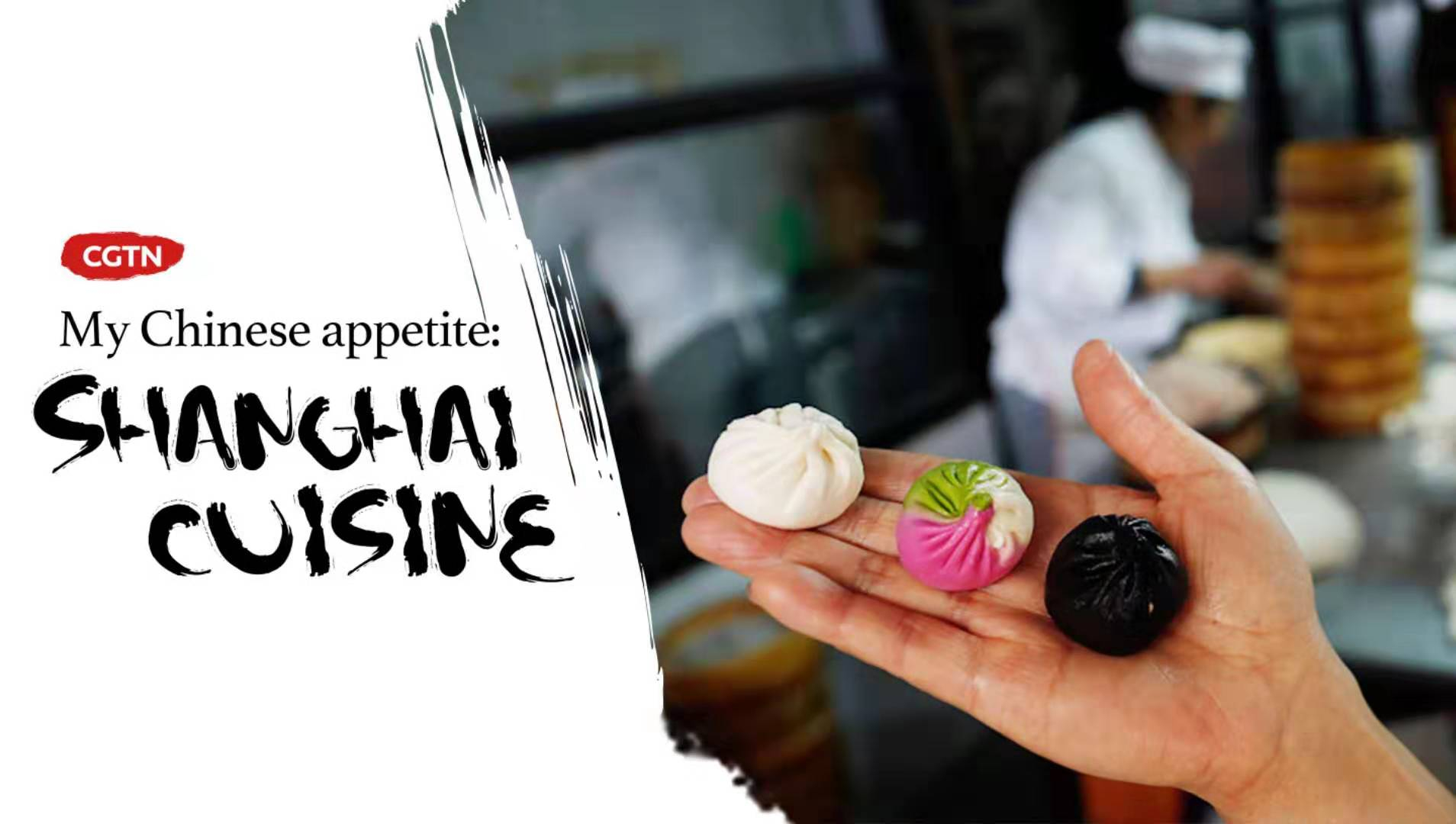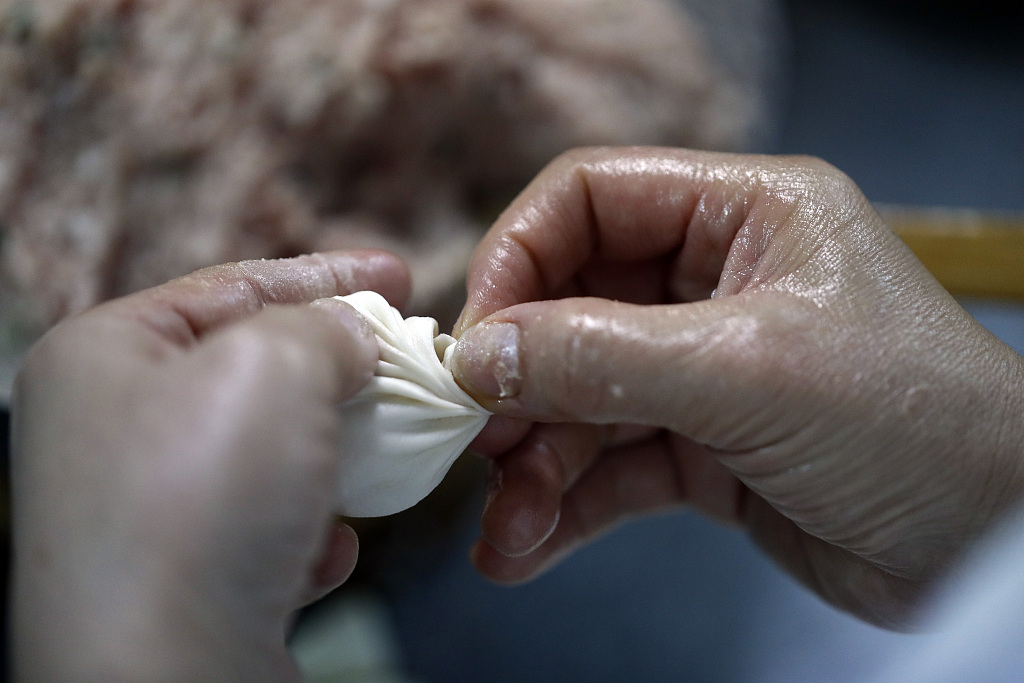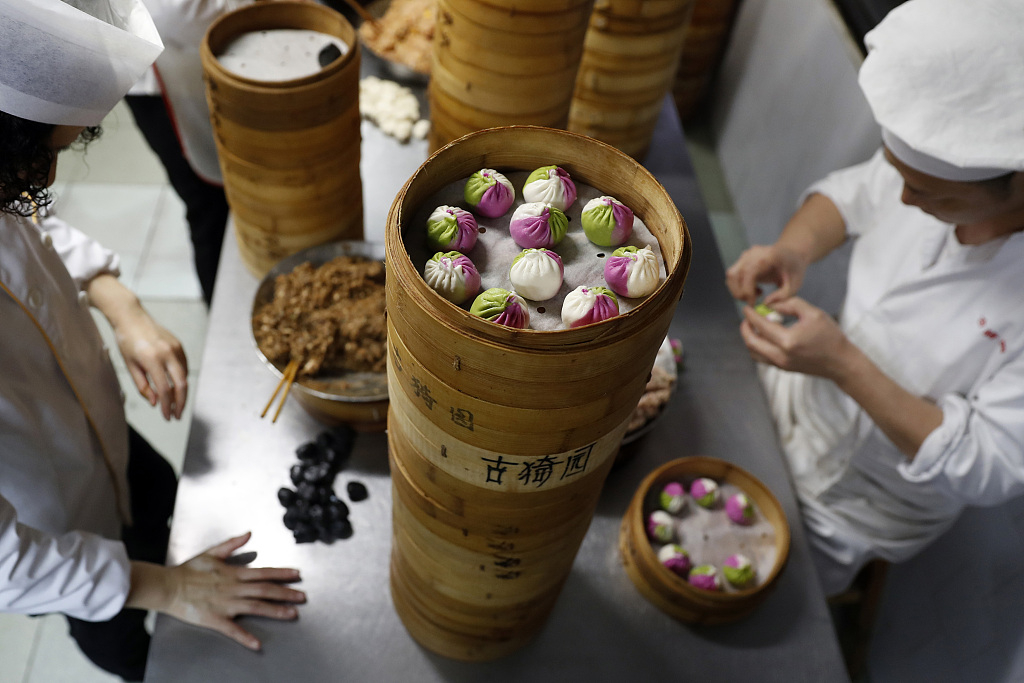

To locals, Shanghai cuisine is traditionally called Benbang cuisine. It has been influenced by culinary styles from the neighboring provinces, Jiangsu and Zhejiang, as well as from overseas as Shanghai was one of the earliest ports in China. As a metropolis, the city has foods from almost all walks of culture, and yet its local cuisine sticks to "color, aroma and taste" as basic elements, and emphasizes the use of seasonings, as well as the quality and original flavors of the raw ingredients.

The making of Nanxiang Xiaolongbao. /VCG Photo
"Nanxiang xiaolongbao," which are tiny steamed meat buns, is one famous specialty in Shanghai's culinary culture. It is known for its "thin wrap, large filling, and beautiful shape." The technique for making it was designated a national intangible cultural heritage in 2014. The skills of cooking the Nanxiang Xiaolongbao originated from the Qing Dynasty.
It is said that "xiaolongbao," or handmade steamed meat buns, should have no fewer than 14 pleats on each one.

A serving of Nanxiang Xiaolongbao usually consists of 10 buns. /VCG Photo
Xiaolongbao is a great choice for those who enjoy dim sum. They are most commonly filled with pork or crab. Served in a bamboo steamer, as shown in the picture, the heat from the steam causes the aspic to melt, creating a succulent soup within the dumpling. Usually, they are served with ginger and vinegar. The buns are juicy while the temperature of the soup inside is piping hot.

Copyright © 2018 CGTN. Beijing ICP prepared NO.16065310-3
Copyright © 2018 CGTN. Beijing ICP prepared NO.16065310-3